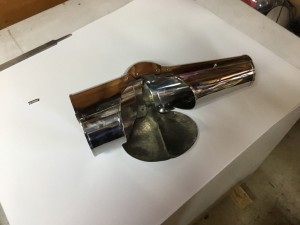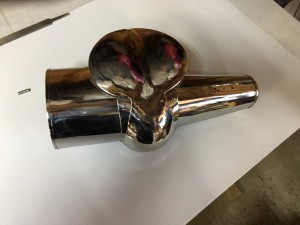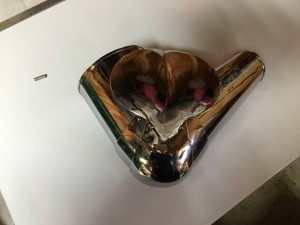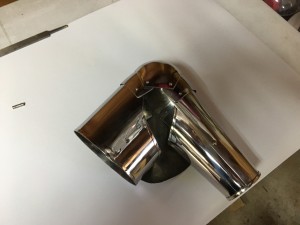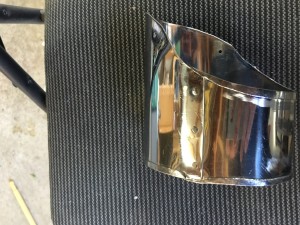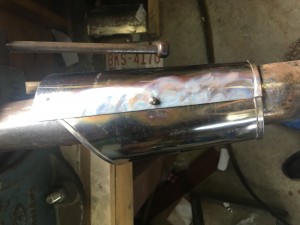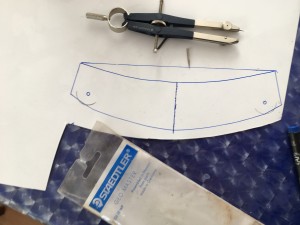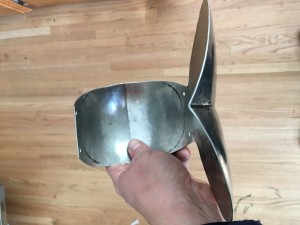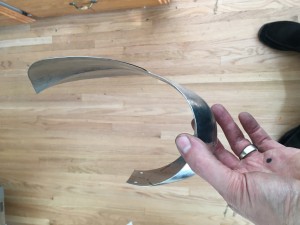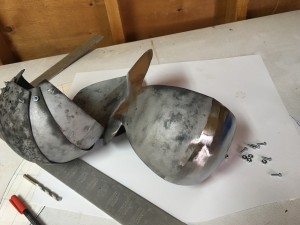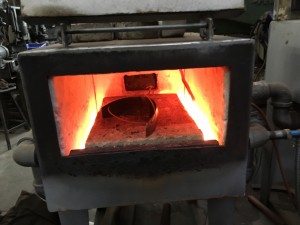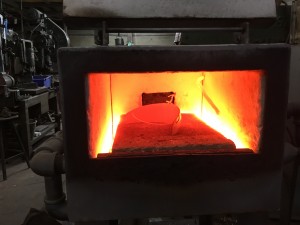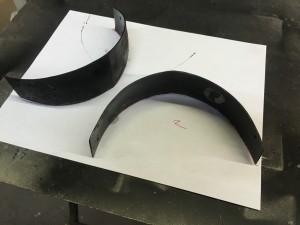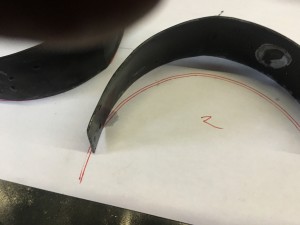Yesterday I finished the first arm harness. It works reasonably well as a prototype, although using stainless steel as a prototype material is probably more than a bit questionable. I would use mild steel, but it’s so “squishy” that my thicknesses aren’t right, stainless is at least a decent proxy for the rigidity of carbon steel. Total build time is now on the order of 60 hours, although building a replacement set (now that I have the pattern and techniques) is probably more on the order of a day to a day and a half per arm harness. I also always forget just how much work is involved in grinding and polishing these dang things, since this is easily 2-3 hours per harness.
The spring pin was an unholy PITA to deal with: I’ll provide a gallery of all the failed pieces for instruction later, but this was the single largest issue with the build, since the vambrace wrapper plate is the single “fiddliest” bit, with 2 rolled edges, a hinge attachment and the pin itself. I had a wrapper fail for BOTH the right AND left arm, so rebuilding these took a lot of time that I wasn’t planning to spend, let alone the proto-prototypes (mild steel) to work out some of the geometry for the vambraces and elbow assembly.
Things that worked well:
- Blending the edges for the vambrace within a millimeter so that the armour looks “right” (one of my pet peeves with “SCA” armour)
- Folding the edges on the vambrace and wrapper BEFORE shaping them (possible because they are a fold, rather than a roll)
- The concept of rolling my excess metal under a rolled edge on the rarebrace
- The general fit of the vambraces, and alignment of the hinges and retaining pins with the rolled edges
Things that did NOT work well
- Welding the retaining stud in the vambrace wrapper
- Construction of the fan (I clearly need practice)
- using the edge of my anvil to flare the fan (which left nicks near the crease in the fan which I couldn’t be bothered to completely clean up for the prototype)
- Elbow articulation geometry (this worked much better when I stopped, threw away the lames and started again with cardstock)
- The shape of the elbow, which is insufficiently pointy. I modelled this (and the central crease) on a Maximillian arm harness from the Churburg collection. Without the gratuitous fluting (which I omitted because it messes up the esthetic) this is a fairly atypical piece – next time I’ll model after one of the Mantova harnesses (or ANY of the earlier Churburg harnesses)
- Creasing the elbow, in a similar fashion to a knee
- Stainless steel hinges (bent without heat – evil metal!)
- insufficient clearance on my rarebrace overlap to fold it into the roll
